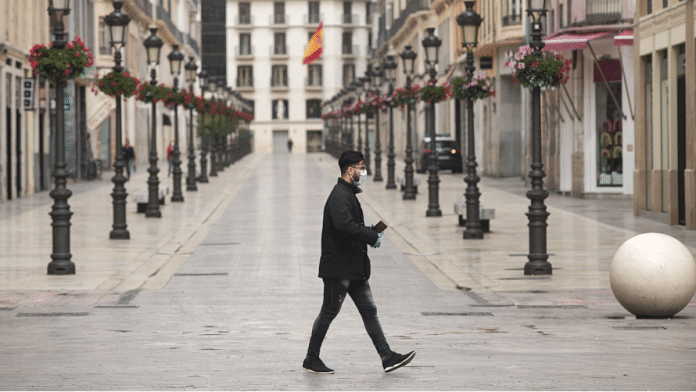Last week’s 750 billion-euro ($877 billion) Covid-19 rescue fund marked a high point in the European Union’s plan to tackle the economic fallout of the virus. But a new flare-up in infections on the continent is a grim reminder of the more immediate epidemiological threat. While it’s not a second wave yet, it’s a serious test of government strategies intended to avoid one.
Cases are rising across the region at the fastest pace since tough lockdown measures were lifted, although overall infections remain much lower than the outbreak’s April peak. In Spain, new daily cases hit almost 1,000 last week, driven by local spikes in areas such as Aragon and Catalonia, where nightclubs are now being closed and curfews applied on bars. In Belgium, an increase in infections has forced the government to roll out tougher social-distancing measures, such as limiting face-to-face interactions.
This shouldn’t come as a shock, given the epidemiological trade-off of easing lockdowns. People are naturally moving around more as stay-at-home curbs are rolled back, and this was always going to give the coronavirus more opportunities to mingle. Even if offices and public transport are still quiet, European streets are filled with shoppers, diners, and drinkers. Google mobility data indicate human traffic is almost back to pre-virus levels in regions like Paris, Madrid and Italy’s Lombardy.
Estimates of the virus’s reproduction rate from Bank of America economists suggest that it’s risen back to around or above 1 in countries including the U.K., France, Italy, Spain and Belgium, meaning one infected person will on average spread it to more than one other person.
So far, the alertness of public authorities has been encouraging. While one might question whether nightclubs in Catalonia should have reopened, you could hardly accuse governments in general of sleepwalking into a new public-health crisis.
The new widespread curbs in Spain and Belgium are worrying, but smaller “smart lockdowns” have been effective too in towns and regions in Germany, the U.K. and Italy. That’s testament to the improvement in virus monitoring tools since the peak of the outbreak, as my colleague Ferdinando Giugliano has written. And the wearing of face masks, initially discouraged in many countries, is now being wisely enforced by policymakers.
Less reassuring are the signs of social-distancing fatigue, particularly among young people. Case statistics in Spain show people in their 20s and 30s are a key source of new infections, as the warm weather, vacation season and reopening of bars and restaurants have made transmission dangers seem less urgent. While young people are far less susceptible to the worst manifestations of Covid-19, governments are right to worry about their ability to spread it. French Health Minister Olivier Veran this week implored youngsters to “be more vigilant,” warning that bars across France could be closed once again.
With governments naturally reluctant to shut their economies again, Europe’s ability to avoid a new spiral of infections and lockdowns depends a lot on testing and tracing resources to keep tabs on chains of transmission. Much has improved in this department: France, Spain and Italy are testing so widely that only an estimated 1% of tests return a positive result. But there are gaps. Contact-tracing apps have been a flop, suffering from delays and low take-up. And testing laboratories are suffering bottlenecks as demand exceeds supply, meaning the delivery of results is slow.
This “new normal” of having to respond to the virus on a daily basis was never going to be easy, and until a vaccine or treatment is found it will create huge uncertainty for business sectors such as leisure and tourism. In Spain, the expected flow of tourists from abroad will slow after the U.K. and Norway imposed new quarantine measures on people returning from the country. Not every country has followed suit — France, for example, is only discouraging travel to Catalonia — but the risk of an EU-wide response is ever-present.
Overall, while there’s reason for cautious optimism, Europe hasn’t definitively escaped the threat of a second wave. It’s going to be a long summer, and maybe an even harder winter.-Bloomberg
Also read: New wave of Covid in Asia Pacific is threatening sputtering recovery of world economy






